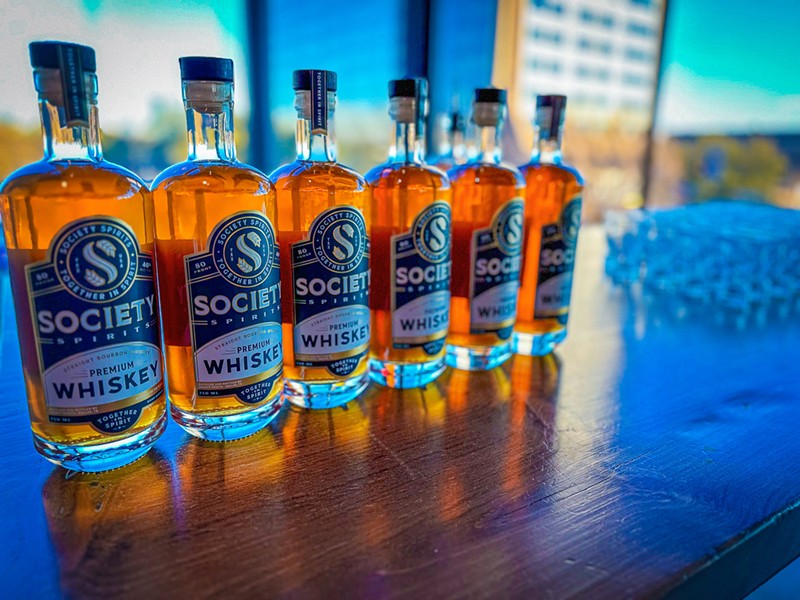Behind-the-Scenes at a Distillery in Galveston: Tours and Tastings
Behind-the-Scenes at a Distillery in Galveston: Tours and Tastings
Blog Article
Opening the Mysteries of Distillery Processes: An In-depth Summary
Within the realm of distillery procedures exist intricacies that usually remain veiled to the casual viewer. As we venture into the depths of spirit aging methods and the precision of high quality control actions, a tapestry of flavors and fragrances arises, formed by classic traditions and innovative practices.
The Art of Mashing and Fermentation
In the distillery process, the art of mashing and fermentation plays a vital duty in changing resources into the initial stages of alcohol production. Mashing involves the procedure of damaging down the starches in grains like barley, rye, or corn, into fermentable sugars. This important step is generally accomplished by blending the machine made grains with warm water to produce a "mash." Enzymes present in the grains aid transform the starches into sugars, creating a sweet liquid referred to as wort.
Once the wort is created, fermentation enters play. Yeast, a vital gamer in this phase, is included in the wort to start the fermentation procedure. Yeast consumes the sugars in the wort, producing alcohol and co2 as by-products. This transformative process typically takes numerous days to finish, depending upon the desired alcohol web content and taste profile.
Mashing and fermentation are elaborate procedures that set the foundation for the alcohol that will become distilled and matured to create an end product with distinctive attributes and flavors.
Understanding the Purification Refine
One of the pivotal stages in the manufacturing of alcohol involves understanding the purification procedure. Purification is a method utilized to separate alcohol from the fermented fluid, usually via heating and cooling processes.

Understanding the purification process is vital for distillers to control the high quality, stamina, and taste of the alcohol being generated. By understanding the art of distillation, distilleries can develop a variety of spirits with distinctive attributes that interest various customer choices.
Secrets of Spirit Aging Techniques
Checking out the details of spirit aging strategies reveals the covert virtuosity behind the advancement of nuanced flavors and aromas in distilled drinks. The aging process is a critical point in the manufacturing of spirits, where the fluid engages with the oak barrels, taking in substances that enhance its account gradually. One of the keys to effective aging lies in the selection of barrels. Distilleries often utilize charred oak barrels, which present unique tastes to the spirit through a procedure of extraction and oxidation. The period of aging is one more important element that distillers carefully control to achieve the desired taste account. Longer aging durations have a tendency to lead to smoother, much more complicated spirits, while much shorter durations might emphasize vibrant, younger attributes.
Moreover, the environmental problems in which the barrels are kept play a substantial role fit the end product. Changes in temperature level and moisture can influence the rate of aging and the interactions between the spirit and wood. Master distillers masterfully navigate these variables to craft spirits with distinct personalities, personifying the conclusion of ingenious methods and time-honored customs.
Quality Assurance and Testing Techniques
The thorough workmanship demonstrated in controlling and choosing barrels aging durations in the spirits manufacturing procedure emphasizes the critical value of strict quality assurance procedures and accurate screening techniques (Galveston Liquor). Quality assurance in distilleries involves numerous phases to ensure that each set fulfills the desired requirements. From resources assessment to final item analysis, each step is essential in keeping uniformity and quality
One crucial element of high quality control is sensory evaluation, where experienced professionals assess the fragrance, flavor, and total quality of the spirits. Chemical analysis techniques such as gas chromatography and mass spectrometry are employed to Click This Link identify any type of pollutants or discrepancies from the preferred composition. In addition, physical tests like density measurements and pH analysis give more understandings right into the item's characteristics.
To guarantee adherence to regulatory needs and interior requirements, distilleries additionally perform microbiological testing to look for any microbial contamination that might impact the item's safety and security and service life. By carrying out durable quality assurance and screening methods, distilleries can promote their track record for producing premium spirits regularly.
Checking Out Distinct Flavor Mixtures
:max_bytes(150000):strip_icc()/LQR_Edit-JapaneseBeers_Facebook-1200x628-2e333b912b254fe1bb2fe9c5987dc1cd.jpg)
In the process of flavor infusion, the picked botanicals are added to the base spirit and delegated emaciate or steep for a specific period. This enables the alcohol to draw out the tastes and essential oils from the botanicals, resulting in a harmonious blend of preferences (Seawall Bar). Distilleries might likewise utilize techniques like vapor mixture or basket infusion throughout purification to impart certain tastes to the spirit
Furthermore, some distilleries choose for barrel aging or barrel ending up techniques to introduce extra intricacy and deepness to their spirits via interactions with the wood. These techniques contribute to the creation of unique more info here flavor accounts that interest a discerning target market seeking book and remarkable drinking experiences.
Verdict
Recognizing the science behind these procedures is vital for creating top quality spirits. By unlocking the enigmas of distillation, distillers can produce distinct and savory spirits that appeal to a broad variety of consumers.
As we venture into the depths of spirit aging strategies and the precision of high quality control steps, a tapestry of scents and flavors emerges, formed by time-honored traditions and cutting-edge practices. Distilleries commonly make use of charred oak barrels, which pass on unique tastes to the spirit with a procedure of removal and oxidation.Using a diverse range of botanicals and ingredients, distilleries can craft unique flavor infusions that set their spirits apart in an affordable market. Distillery in Galveston.In the procedure of flavor infusion, the selected botanicals are included to the base spirit and left to emaciate or steep for a specific period. Distilleries may additionally hop over to here use methods like vapor mixture or basket mixture throughout distillation to give certain tastes to the spirit
Report this page